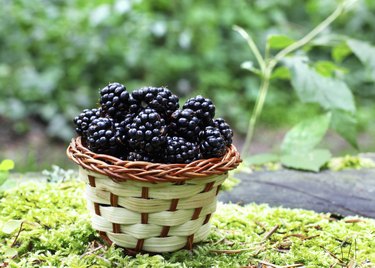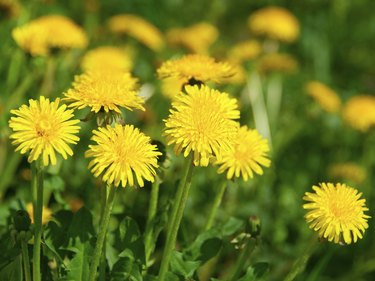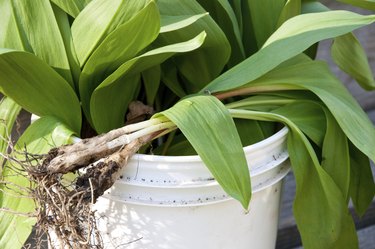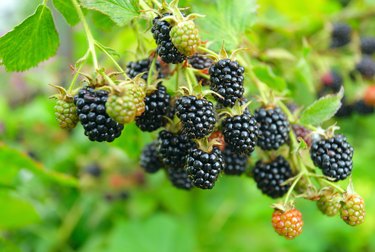
Between the mountain and maritime regions of North Carolina lies a vast wealth of biologically diverse woodlands. Native Americans and European settlers harvested the rich edible plant resources of North Carolina for hundreds of years, relying on the nutritious bounty of the forest during lean times. Interest in wild edibles has grown in recent years, leading modern day foragers to seek out and collect edible plants from North Carolina forests.
Greens
Video of the Day

Edible wild greens begin to appear in early spring and are available throughout the summer. Although some are edible raw, many need to be cooked to improve their taste and to neutralize any bacteria and unpalatable elements present. Fiddleheads are the first shoots of young ferns, particularly cinnamon fern (Osmundastrum cinnamomeum), which is the most commonly available species in North Carolina. Appearing in early spring, the fiddleheads are small, curling greens with a delicate flavor. They must be cooked thoroughly before being eaten, generally boiled twice with a change of water, then eaten with butter or added to soups or salads. Another wild edible is kudzu (Pueraria montana). Although it is not a native plant, kudzu grows wild in North Carolina. The leaves are edible raw or cooked. Dandelion (Taraxacum officinale) is one of the most common wild edible greens. Generally regarded as a nuisance weed, dandelion greens are delicious raw when young and lightly cooked when mature. Rinse dandelion greens thoroughly before eating to remove any pesticide residue.
Video of the Day
Nuts

Nuts are readily available in most woodland areas of North Carolina. Although it is now rare, American chestnut (Castanea dentata) was once an abundant and valuable source of protein for Native Americans in the region. The nuts are easily recognizable due to their large, spiny burrs. Grown extensively for the commercial trade, black walnut (Juglans nigra) is also a prolific wild edible. The nuts, which are inside smooth-skinned, large, green husks, can be difficult to remove. Found in the Piedmont and coastal plains of North Carolina, the American beech (Fagus grandifolia) bears small, spiny nuts that are best toasted to bring out their sweetness. Although difficult to harvest, beechnuts are very palatable wild nuts. Acorns from the southern live oak (Quercus virginiana) and white oak (Q. alba) are also valuable food sources, if properly processed. Acorns from both species need to be thoroughly soaked to remove their natural bitterness.
Tubers, Roots and Bulbs

Tubers, roots and bulbs store nutrients in many types of plants, making them among the most nutritious wild edibles. Groundnut (Apios Americana), a perennial flowering vine found in marshy areas of North Carolina, produces a starchy tuber that resembles potato in taste and texture, but with a higher protein content. Although they can be harvested throughout the growing season, groundnuts are at the height of flavor and nutrition in autumn. Jerusalem artichoke (Helianthus tuberosus) is a species of sunflower prized for its tuber, which resembles water chestnuts in taste and texture. Commonly seen along roadsides in North Carolina, Jerusalem artichoke is an easily recognizable and readily available wild edible. Wild leek (Allium tricoccum) is available only for a short time in early spring. Sometimes called ramps, the underground portion of wild leek is the most palatable, having a pleasant onion-like taste and garlicky odor.
Berries and Fruit

Arguably, the most universally collected wild edibles are berries and fruit. In North Carolina, species such as red mulberry (Morus rubra) and blackberry (Rubus fruticosus) are found virtually everywhere in late summer. Found in North Carolina east of the coastal plains, common serviceberry (Amelanchier arborea) is a lesser-known variety of edible berry that grows open, sunny woodlands. Foragers gather the reddish-purple, apple-shaped fruits during midsummer and eat them raw. Pawpaw (Asimina triloba) is a small fruiting tree native to the southern United States. The fruit, also called custard apple, has a banana-like taste and texture. Although common, pawpaws are a favorite food source for birds and animals, so they tend to disappear quickly when ripe.